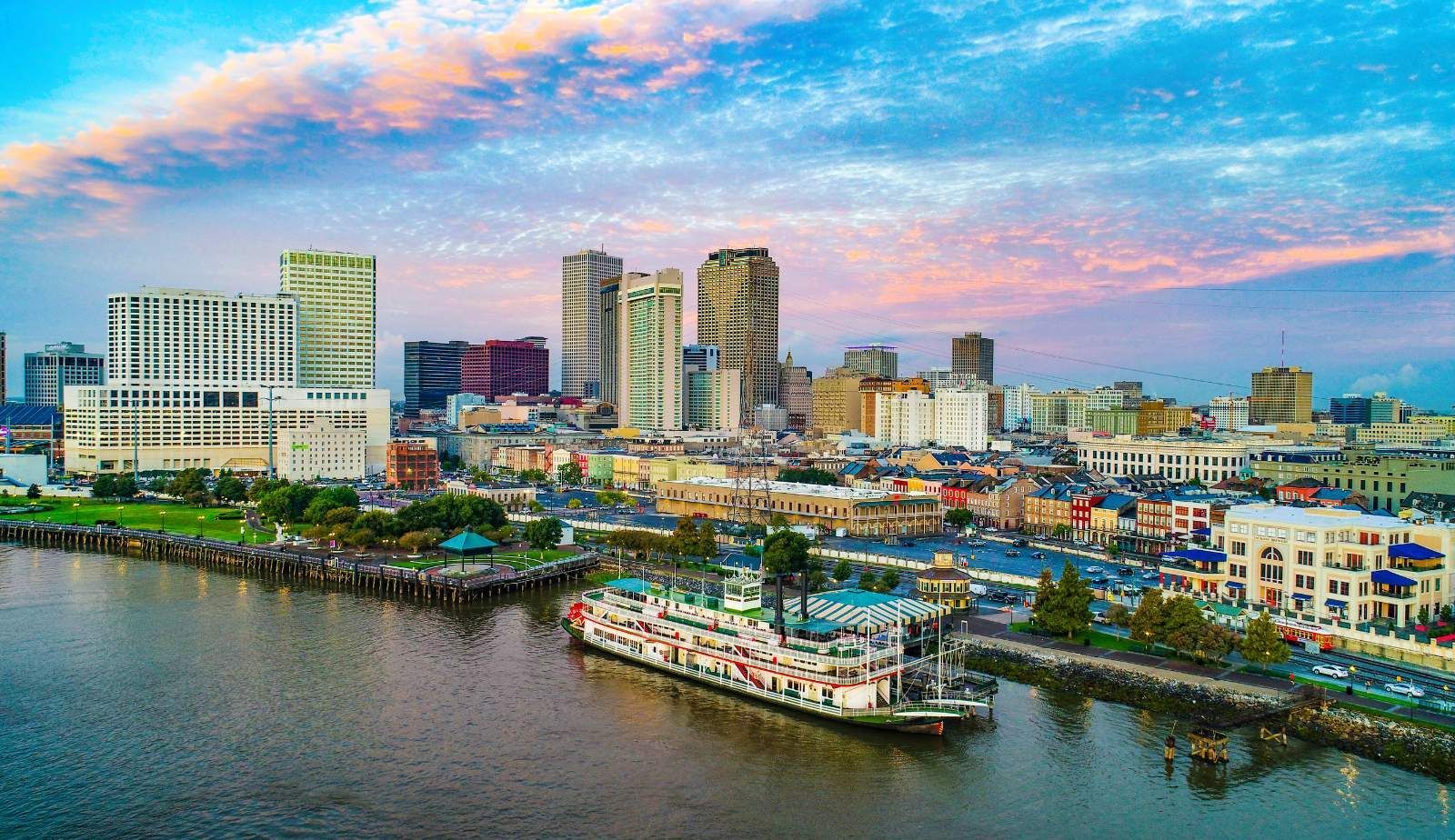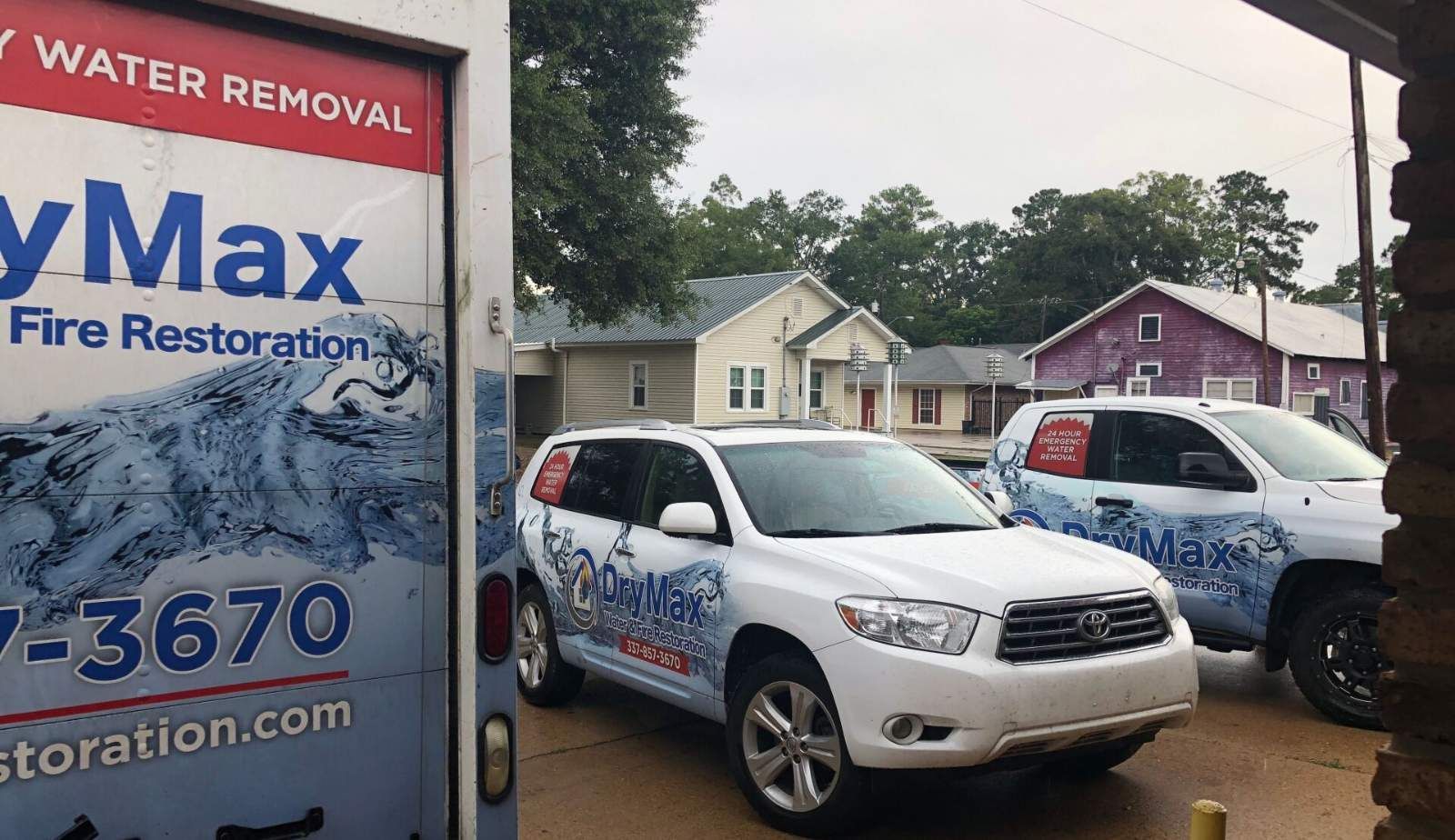Impact of Local Climate on Restoration Techniques in Louisiana: Adapting to Humidity and Storms in Water and Fire Damage Recovery
Louisiana's unique climate presents distinctive challenges for water and fire damage restoration. The state's high humidity, frequent storms, and vulnerability to flooding shape the approaches used by restoration professionals. Specialized techniques and equipment are essential to combat moisture-related issues and prevent secondary damage in Louisiana's demanding environment.
Climate change amplifies these challenges, increasing the frequency and intensity of extreme weather events. Restoration experts in Louisiana must adapt their methods to address evolving climate patterns and their impact on buildings and infrastructure. This includes implementing advanced drying technologies, mold prevention strategies, and storm-resistant restoration materials.
The intersection of Louisiana's climate and restoration techniques underscores the importance of local expertise. Companies like Drymax Water, Fire, Mold Restoration tailor their approaches to the specific conditions of the region, ensuring effective and long-lasting results. By understanding and working with Louisiana's climate, restoration professionals can better protect properties from future damage and contribute to the state's resilience in the face of environmental changes.
Louisiana's Unique Climate and Environmental Challenges
Louisiana's climate presents distinct challenges for restoration efforts. The state's high humidity and frequent storms create a complex environment that requires specialized approaches to water and fire damage restoration.
High Humidity and Its Implications
Louisiana's high humidity levels significantly impact restoration techniques. The moisture-laden air can slow drying processes and promote mold growth.
Restoration professionals must use dehumidification equipment extensively to combat these conditions. They often employ specialized drying techniques to prevent secondary damage to materials.
The humid climate also affects the selection of restoration materials. Professionals choose products resistant to moisture absorption and mold growth.
Frequent Storms and Flooding Effects
Louisiana faces regular storms and flooding, complicating restoration efforts. Storm surge and heavy rainfall can lead to widespread water damage.
Restoration teams must be prepared for rapid response and have strategies for large-scale water extraction. They use powerful pumps and industrial-grade drying equipment to manage flood damage.
The frequency of these events necessitates resilient restoration methods. Professionals often recommend flood-resistant materials and elevated installations for vulnerable areas.
Storm damage can also lead to power outages, requiring restoration teams to have backup power sources for their equipment.

Influence of Water Systems on Restoration Strategies
Louisiana's extensive water systems significantly shape restoration approaches in the state. The Mississippi River and vast marshes and wetlands create unique challenges and opportunities for restoration efforts.
The Mississippi River's Role
The Mississippi River plays a crucial role in shaping restoration strategies in Louisiana. Its frequent flooding necessitates specialized restoration techniques for water-damaged properties. Restoration professionals must account for silt deposits and contaminants carried by floodwaters.
River management practices, such as levees and floodgates, impact restoration efforts. These structures can alter natural water flow patterns, affecting moisture levels in surrounding areas. Restoration teams must consider these factors when developing drying plans.
The river's influence extends to groundwater levels, affecting foundation stability. This requires careful assessment during structural restoration projects. Professionals often employ advanced moisture detection tools to identify hidden water damage in buildings near the river.
Marshes and Wetlands in Restoration
Louisiana's extensive marshes and wetlands present unique challenges for restoration work. These ecosystems act as natural buffers against storms but also contribute to high humidity levels.
Restoration teams must adapt their techniques to combat persistent moisture. Specialized dehumidification equipment is essential in these areas. Professionals often use encapsulation methods to protect restored spaces from ambient humidity.
The biodiversity of wetlands introduces additional considerations. Restoration efforts must minimize environmental impact. Teams often employ eco-friendly cleaning agents and restoration materials compatible with sensitive ecosystems.
Wetland restoration itself is a growing field in Louisiana. It involves techniques like sediment diversion and vegetation planting. These efforts not only restore natural habitats but also enhance flood protection for nearby communities.
Erosion and Land Loss Dynamics
Louisiana faces significant challenges from erosion and land loss, particularly along its coastline. These processes are driven by complex interactions between natural forces and human activities, profoundly impacting restoration efforts.
Coastal Erosion and Sediment Diversions
Coastal erosion in Louisiana occurs at an alarming rate, with the state losing approximately 1,900 square miles of land since the 1930s. This loss is primarily due to a combination of natural processes and human interventions.
Sea-level rise, storm surge, and wave action contribute to the erosion of coastal areas. Additionally, the channelization of the Mississippi River has reduced sediment deposition in coastal wetlands.
To combat this issue, Louisiana has implemented innovative solutions. The Mid-Barataria Sediment Diversion project stands out as a pioneering effort. This project aims to redirect sediment-rich water from the Mississippi River to rebuild coastal wetlands.
Subsidence and Carbon Balance Concerns
Subsidence, or the gradual sinking of land, exacerbates erosion and land loss in Louisiana. This process is caused by various factors, including:
- Natural compaction of sediments
- Extraction of groundwater and hydrocarbons
- Reduced sediment deposition due to river management
The issue of subsidence is closely linked to carbon balance concerns. Coastal wetlands serve as important carbon sinks, storing significant amounts of carbon in their soil and vegetation.
As land subsides and erodes, these carbon stores are at risk of being released into the atmosphere. This potential carbon release poses additional challenges for climate change mitigation efforts in the region.
Restoration techniques must consider both the physical aspects of land loss and the ecological implications for carbon storage. Balancing these factors is crucial for developing effective and sustainable restoration strategies in Louisiana's unique climate.

Restoration Planning and Coastal Master Plan
Louisiana's coastal restoration efforts are guided by comprehensive planning and collaboration. The state's approach integrates ecosystem restoration strategies with governance structures that involve diverse stakeholder groups.
Strategies for Ecosystem Restoration
The Louisiana Coastal Master Plan serves as a 50-year blueprint for large-scale restoration and protection of critical coastal areas. It aims to preserve Louisiana's rich culture, ecosystems, and natural resources threatened by ongoing land loss and flood risk.
The plan prioritizes projects that build or maintain land and reduce flood risk. These include marsh creation, barrier island restoration, and sediment diversions. Restoration techniques are tailored to Louisiana's unique climate, addressing challenges like high humidity and frequent storms.
Projects are selected based on their ability to provide multiple benefits, such as habitat restoration and storm surge reduction. The Master Plan is updated every six years to incorporate new scientific understanding and changing environmental conditions.
Governance and Stakeholder Groups
The Coastal Protection and Restoration Authority (CPRA) oversees the implementation of the Coastal Master Plan. CPRA develops annual plans for integrated coastal protection and manages the Coastal Protection and Restoration Trust Fund.
Stakeholder engagement is crucial to the planning process. Local communities, indigenous groups, industry representatives, and environmental organizations participate in public meetings and provide input on proposed projects.
The governance structure ensures that diverse perspectives are considered in decision-making. This collaborative approach helps balance competing interests and fosters community support for restoration efforts.
Climate Change Mitigation in Coastal Restoration
Coastal restoration in Louisiana plays a crucial role in climate change mitigation efforts. These projects aim to reduce greenhouse gas emissions while enhancing ecosystem health and resilience.
GHG Reduction and Carbon Flux Considerations
Coastal habitats can significantly contribute to climate change mitigation. Louisiana's restoration projects must consider potential greenhouse gas fluxes in coastal areas. Wetlands can act as both carbon sinks and sources, depending on
environmental conditions.
Restoration techniques focus on optimizing carbon sequestration. This involves enhancing vegetation growth and sediment accumulation. Managers carefully monitor methane emissions, a potent greenhouse gas often produced in wetland environments.
Hydrologic restoration is a key strategy. It enhances climate change mitigation potential in coastal wetlands. Proper water management can increase carbon capture and reduce overall greenhouse gas emissions.
Natural Climate Solutions and Ecosystem Health
Natural climate solutions in coastal Louisiana leverage ecosystem processes to mitigate climate change. These approaches simultaneously improve habitat quality and biodiversity.
Coastal wetland restoration is most effective when it adds carbon to the landscape. This reduces atmospheric greenhouse gas concentrations and provides cooling benefits. Restoration projects target areas where the difference between pre- and post-restoration climate impact is largest.
Adaptive management strategies are crucial. They help ecosystems cope with sea level rise and changing climate conditions. These approaches ensure long-term success of restoration efforts and sustained climate mitigation benefits.
Adaptation Techniques for Water and Fire Damage
Louisiana's unique climate necessitates specialized approaches for water and fire damage restoration. Innovative technologies and environmental recovery methods are crucial in addressing the challenges posed by high humidity and frequent storms.
Technologies in Moisture Control
Advanced dehumidification systems play a vital role in moisture control for restoration projects in Louisiana. These systems are designed to operate efficiently in high-humidity environments, removing excess moisture from the air and affected materials.
Thermal imaging cameras help technicians identify hidden water damage in walls and floors. This technology allows for precise targeting of problem areas, reducing restoration time and costs.
Moisture meters with Bluetooth connectivity enable real-time data tracking and analysis. Restoration teams can monitor drying progress remotely, adjusting their strategies as needed.
Specialized drying equipment, such as desiccant dehumidifiers, is particularly effective in Louisiana's climate. These machines can maintain low humidity levels even in challenging conditions.
Fire Damage and Environmental Recovery
Fire damage restoration in Louisiana requires a comprehensive approach that considers the impact of climate on recovery efforts. Restoration teams use eco-friendly cleaning agents that are effective in high-humidity environments without compromising air quality.
Ozone generators are employed to eliminate smoke odors, but their use is carefully controlled due to Louisiana's air quality regulations. Air scrubbers with HEPA filters remove soot particles and improve indoor air quality during the restoration process.
Encapsulation techniques are adapted to withstand Louisiana's frequent temperature fluctuations. This ensures that treated surfaces remain protected from smoke damage and moisture intrusion over time.
Restoration professionals also focus on mold prevention strategies, as fire-damaged structures in Louisiana's humid climate are particularly susceptible to mold growth. They use antimicrobial coatings and treatments that are resistant to high humidity levels.

Addressing Societal Impacts in Restoration Efforts
Restoration efforts in Louisiana extend beyond technical challenges, encompassing crucial societal dimensions. These efforts intersect with social justice concerns and have significant economic implications for coastal communities.
Social Justice and Risk Reduction
Restoration projects in Louisiana must address social equity considerations to ensure fair outcomes. Low-income neighborhoods often face higher risks from water and fire damage due to aging infrastructure and limited resources.
Community workshops play a vital role in educating residents about risk reduction strategies. These sessions empower locals with knowledge on proper maintenance and early warning signs of potential damage.
Heritage preservation is another key aspect of socially conscious restoration. Many historic buildings in Louisiana require specialized techniques to maintain their cultural significance while improving resilience.
Political economy factors influence risk reduction policies. Local governments must balance the needs of various stakeholders when allocating resources for restoration and prevention efforts.
Economic Considerations in Coastal Communities
Coastal communities in Louisiana face unique economic challenges related to restoration efforts. The fishing and tourism industries, vital to these areas, can be severely impacted by water damage and subsequent restoration activities.
Restoration projects create job opportunities but may also disrupt existing livelihoods temporarily. Careful planning is essential to minimize economic hardships during implementation phases.
Insurance costs in high-risk areas pose a significant burden on residents. Effective restoration techniques can help mitigate these costs by reducing the likelihood and severity of damage.
Public-private partnerships often drive large-scale restoration initiatives. These collaborations can bring much-needed investment to coastal communities while addressing critical infrastructure needs.
Promoting Long-Term Sustainability and Resilience
Louisiana's restoration efforts require a forward-thinking approach to ensure lasting effectiveness. This involves incorporating diverse perspectives and preparing for future climate challenges.
Integrating Agricultural and Forestry Perspectives
Agricultural and forestry practices play a crucial role in Louisiana's climate change resilience. Farmers and foresters possess valuable knowledge about local ecosystems and weather patterns.
Their insights can inform restoration techniques, particularly in managing soil moisture and preventing erosion. For example, agroforestry methods combine trees and crops to enhance land stability and biodiversity.
Restoration projects benefit from incorporating native plant species identified by local experts. These plants are often more resilient to Louisiana's climate extremes and help maintain ecological balance.
Forecasting and Preparing for Future Climate Scenarios
Restoration professionals must anticipate future climate conditions to design sustainable solutions. This involves analyzing climate models and historical data to predict potential challenges.
Advanced technologies like AI and remote sensing help monitor environmental changes and forecast extreme weather events. These tools allow for proactive measures in high-risk areas.
Adaptive management strategies are essential. Restoration plans should be flexible, allowing for adjustments based on observed climate impacts and new scientific findings.
Education and community involvement are key to long-term success. Training local residents in sustainable practices ensures ongoing care and maintenance of restored areas.
Frequently Asked Questions
Louisiana's unique climate presents distinct challenges for restoration professionals. The following questions address key aspects of water, fire, and mold restoration techniques adapted to the state's environmental conditions.
What restoration techniques are used in Louisiana to manage water damage due to frequent storms?
Restoration companies in Louisiana employ rapid water extraction methods using powerful pumps and vacuums. They utilize industrial-strength dehumidifiers and air movers to accelerate drying in high-humidity conditions.
Moisture mapping technology helps identify hidden pockets of water retention. Restoration experts often apply antimicrobial treatments to prevent mold growth in water-damaged areas.
How does high humidity in Louisiana affect fire damage restoration processes?
High humidity in Louisiana complicates fire damage restoration by slowing the drying process of affected materials. Restoration professionals use specialized dehumidification equipment to control moisture levels during cleanup.
They may also employ thermal fogging techniques to neutralize smoke odors that can become more persistent in humid environments. Careful climate control within damaged structures is essential to prevent secondary damage from moisture.
What are the unique challenges faced by restoration companies in Louisiana like Drymax when dealing with mold?
Mold growth is a significant concern in Louisiana's humid climate. Restoration companies must act quickly to prevent rapid mold spread in water-damaged areas.
They use advanced moisture detection tools to identify potential mold habitats. Professionals often implement containment measures to prevent cross-contamination during mold remediation processes.
In what ways does Louisiana's climate influence the selection of restoration technologies and materials?
Louisiana's climate necessitates the use of moisture-resistant and mold-inhibiting materials in restoration projects. Restoration companies select durable, water-resistant building materials for repairs.
They may opt for specialized coatings and sealants designed to withstand high humidity and frequent moisture exposure. Climate-adaptive technologies for moisture control and air purification are frequently employed.
How do restoration experts in Louisiana prepare for the high frequency of weather-related incidents?
Restoration companies in Louisiana maintain a state of readiness with pre-positioned equipment and supplies. They develop rapid response plans tailored to various weather scenarios.
Staff undergo specialized training in storm damage restoration techniques. Companies often establish partnerships with local suppliers to ensure quick access to necessary materials during peak demand periods.
What is the role of climate adaptation strategies in the restoration industry within Louisiana?
Climate adaptation strategies in Louisiana's restoration industry focus on increasing resilience to frequent storms and flooding. Companies integrate flood-resistant design principles into their restoration work.
They advise clients on long-term solutions such as elevating structures and improving drainage systems. Restoration experts stay informed about evolving climate patterns to anticipate future challenges and adapt their techniques accordingly.
You might also like
DryMax Restoration Blogs




